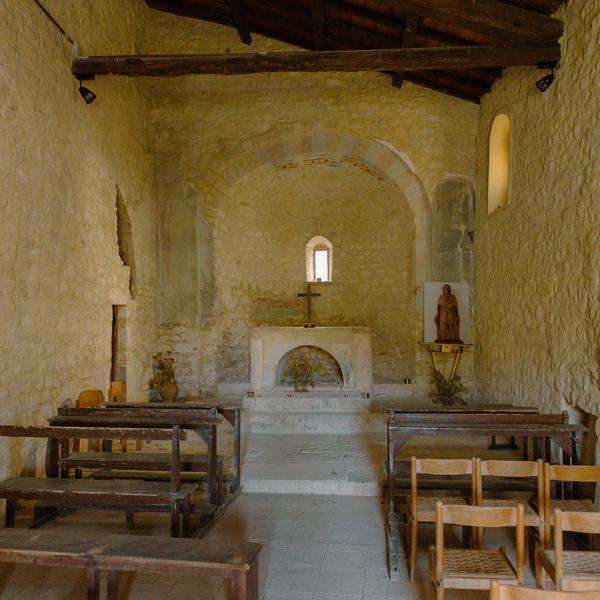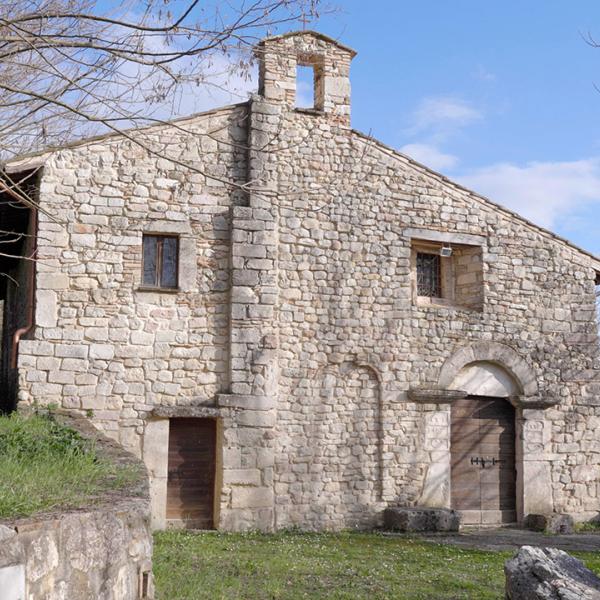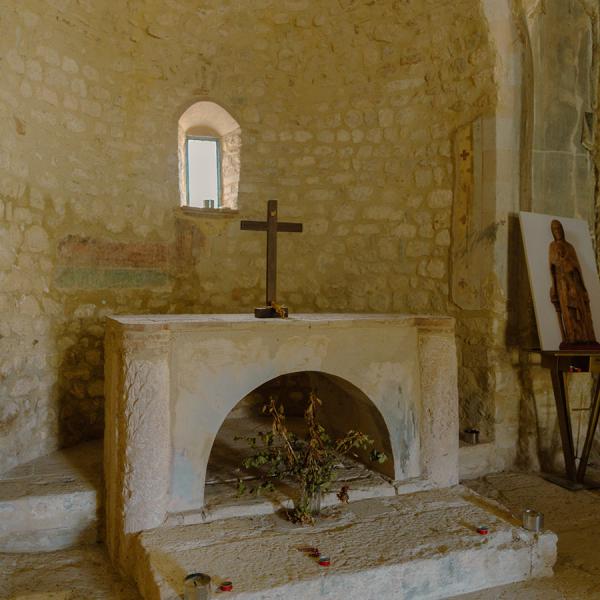The origin of the church is presumably very ancient, probably dating back to the period immediately following the abandonment of Carsulae, but there is no certain information.
According to some, the site represented the primitive nucleus of the village of Cesi and was the seat of a Benedictine community.
Today the façade is strongly asymmetrical, originally it was sloping, with a ribbed bell tower and a single arch placed in line with the same. The apse is semicircular, arranged symmetrically in respect to the old church.
The portal is flanked by two stones from Carsulae. On the right-hand wall of the older building, about two metres below the walking surface, one can see a small walled-up door, so maybe the church had a crypt.
The interior has a single nave, bare and unadorned; at the sides of the altar there are frescoes of St. Benedict and an unidentifiable saint, the only remains of the ancient pictorial decoration.






